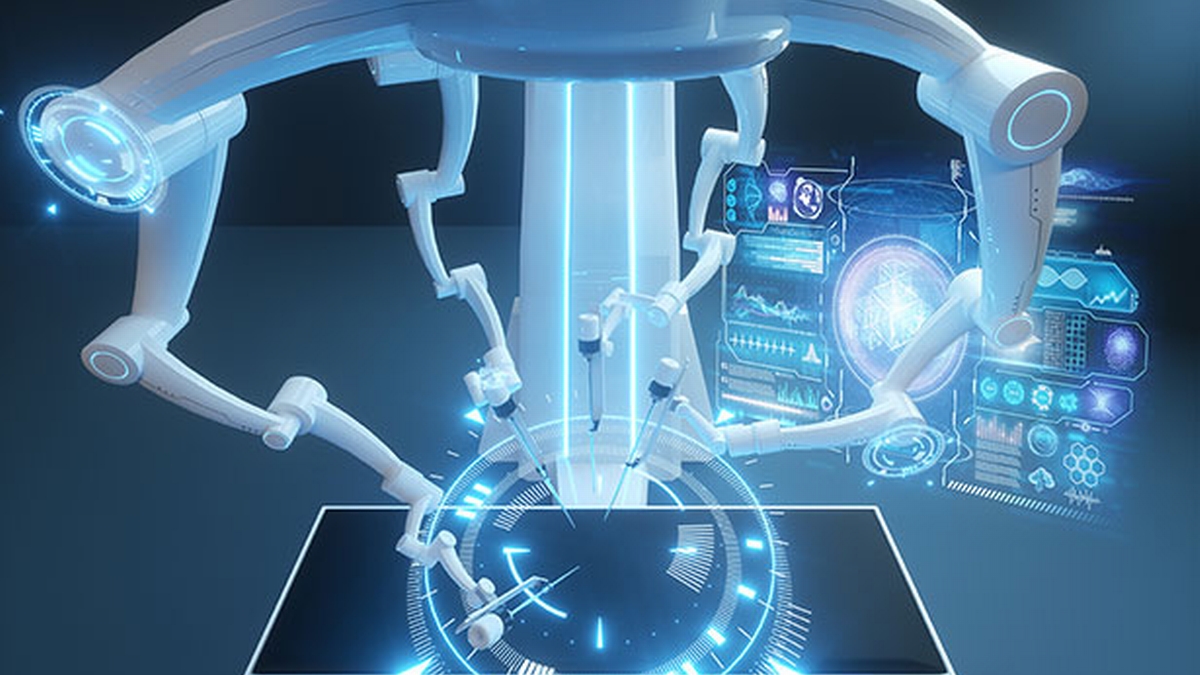Introduction
The field of healthcare has always been at the forefront of technological advancements, constantly seeking ways to improve patient care and outcomes. In recent decades, one of the most remarkable developments in the realm of surgery has been the emergence of robotic surgical innovations. This groundbreaking technology has revolutionized the way medical procedures are conducted, offering a plethora of benefits to both patients and healthcare professionals.
In this comprehensive blog post, we will take you on a journey through the exciting world of robotic surgery, delving into its history, the advantages it brings to the table, the current state of this technology, and the promising future it holds.
The Evolution of Robotic Surgery
To understand the significance of robotic surgical innovations, we must first explore their history. The roots of this technology can be traced back to the 1980s, when the concept of using robots in surgery started to take shape. The idea was to create machines that could assist surgeons in performing procedures with greater precision and control.
The first robotic surgical system, known as the PUMA 560, was introduced in 1985. While it was relatively primitive compared to today’s systems, it laid the foundation for further advancements in the field. In 2000, the da Vinci Surgical System, developed by Intuitive Surgical, received FDA approval for general laparoscopic surgery. This marked a significant turning point, as it allowed for minimally invasive procedures with unparalleled precision.
Advantages of Robotic Surgery
Robotic surgical innovations have brought about numerous advantages that have transformed the medical field:
Precision and Accuracy: One of the primary benefits of robotic surgery is the exceptional precision it offers. Robotic systems can make minute, controlled movements that are often beyond the capabilities of the human hand. This leads to reduced chances of errors during surgery.
Minimally Invasive Procedures: Robotic surgery allows for smaller incisions, which means less trauma to the patient’s body. This results in quicker recovery times, reduced pain, and fewer post-operative complications.
Enhanced Visualization: Surgeons using robotic systems have access to 3D, high-definition visuals of the surgical site. This improved visualization aids in decision-making and the overall success of the procedure.
Reduced Blood Loss: The precision of robotic systems minimizes the risk of excessive bleeding during surgery, further improving patient safety.
Shorter Hospital Stays: Patients undergoing robotic surgery typically spend less time in the hospital, leading to cost savings and a reduced risk of hospital-acquired infections.
Surgeon Comfort: Robotic systems are ergonomically designed, reducing the physical strain on surgeons during long procedures.
Current Robotic Surgical Advancements
The field of robotic surgery is continuously evolving. Recent advancements in this technology have expanded its applications and improved its capabilities. Some notable developments include:
Single-Port Robotic Surgery: Traditional robotic surgery involves multiple ports or incisions. However, recent innovations have enabled single-port robotic surgery, where all instruments are inserted through a single incision. This reduces scarring and further minimizes the invasiveness of the procedure.
Artificial Intelligence Integration: AI algorithms are being integrated into robotic surgical systems to provide real-time data analysis and assist surgeons in making critical decisions during surgery.
Haptic Feedback: Researchers are working on incorporating haptic feedback into robotic systems, allowing surgeons to “feel” the tissues they are working on. This tactile feedback can enhance the surgeon’s control and precision.
Telesurgery: The ability to perform surgery remotely is a growing area of interest. With the help of advanced robotic systems, surgeons can operate on patients located in different geographical locations. This has the potential to increase access to specialized medical care.
Robot-Assisted Cardiac Surgery: Robotic systems are now being used in intricate cardiac surgeries, offering unparalleled precision in delicate procedures like valve repairs and coronary artery bypass surgeries.
The Future of Robotic Surgery
As robotic surgical innovations continue to progress, the future of this technology is indeed promising. Here are some trends and developments we can expect to see in the coming years:
Wider Adoption: Robotic surgery will become increasingly accessible in more hospitals and medical facilities, offering patients a broader range of minimally invasive treatment options.
Advanced Training Programs: Surgeons will receive comprehensive training in robotic surgery, ensuring that they can harness the full potential of these systems.
Improved Affordability: As technology matures, the cost of robotic surgical systems is likely to decrease, making them more cost-effective for healthcare institutions.
Customized Surgical Robots: Personalized robotic systems designed for specific procedures and individual patient needs will become more common.
AI-Driven Diagnostics: AI algorithms will play a more significant role in preoperative planning, aiding in the identification of optimal surgical approaches and predicting outcomes.
Remote Surgical Collaboration: Surgeons will collaborate across borders, sharing their expertise and performing surgeries together using robotic systems.
Microbot Surgery: The development of even smaller robotic instruments will enable intricate procedures at the microscale, opening doors to new treatment possibilities.
Conclusion
Robotic surgical innovations have undeniably transformed the landscape of healthcare, offering a range of benefits that enhance patient outcomes and improve the working conditions of surgeons. The evolution of this technology, from its humble beginnings to the current state of the art, has been nothing short of remarkable.
As we look ahead to the future of robotic surgery, we can anticipate further advancements that will shape the way we approach medical procedures. The combination of artificial intelligence, remote capabilities, and the development of specialized robotic systems is set to revolutionize healthcare on a global scale.
With these innovations, the medical community is taking significant steps toward providing safer, more efficient, and more accessible surgical options for patients worldwide. The journey of robotic surgical innovations is an exciting one, and the best is yet to come.



